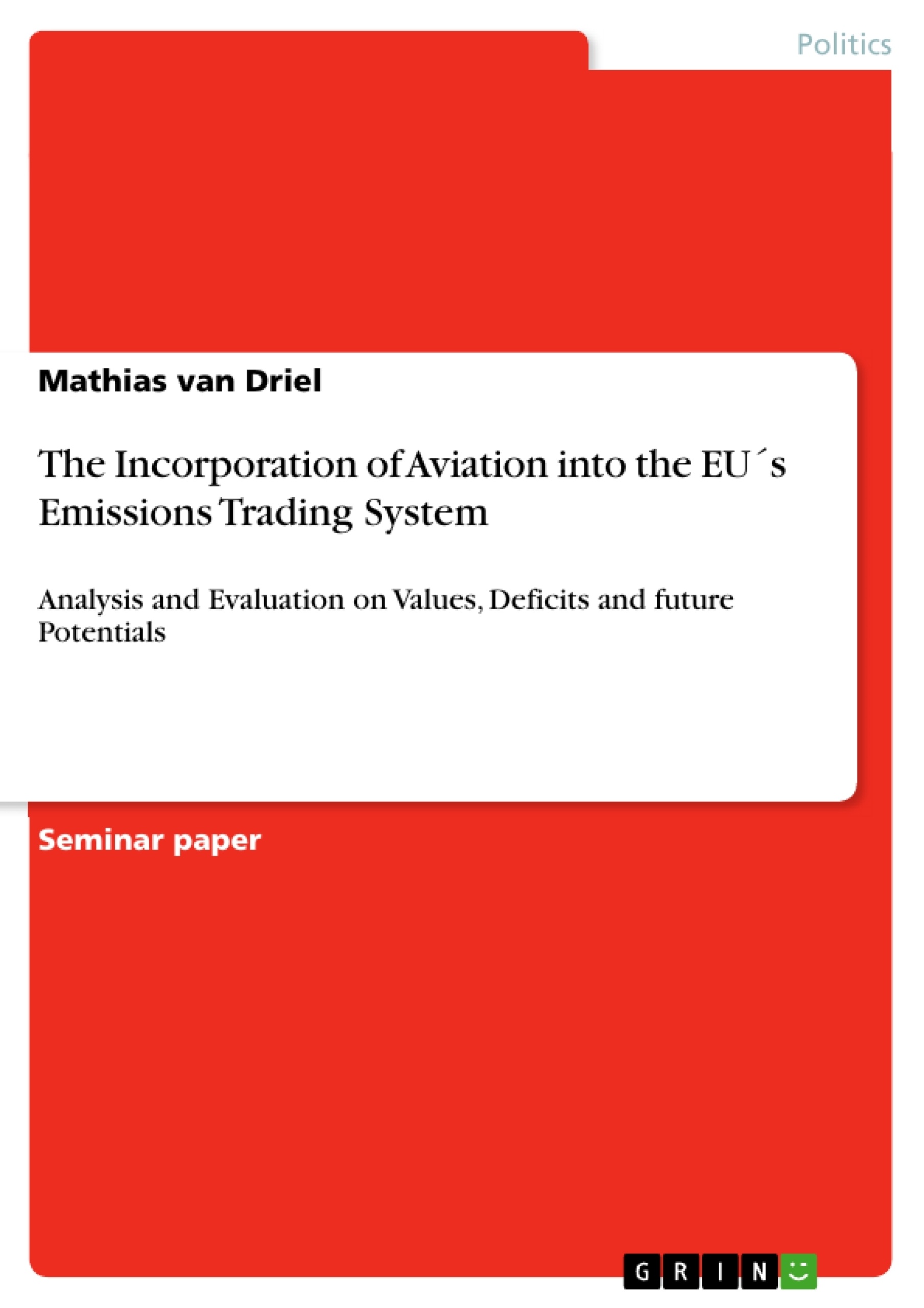Within the scope of this course the presentation results from the commissioned group works, divided into thematic clusters - supplemented by active discussions - have acuminated the view on contents and concepts of this issued EU Policy. In doing so, it was a major aim to analyse political instruments within the EU, used to accesses various fields of environmental problems.
Congruously in this Policy Paper, a specific instrument of EU Environmental Policy is chosen to be analysed and finally evaluated by its performances and capabilities as operational policy instrument.
In the course of the seminar, the preservative subject area of Climate Policy has crystallised as an emerged and large-scaled subject to EU Environmental Policy. EU Climate Policy contacts nearly every field in European environmental adoption. Facing the latest scientific prognoses and reviewing European as well
as common global environmental activity - the abatement of Climate Change appears to be one of the most superordinated aims.
Hence, this policy topic especially defies an exemplary investigation on how EU policy-making proceeds, to protect environment in anent to a current issue.
At present, the EU Emissions Trade System / -Scheme (EU ETS) as one of the most expansive pillars to the Union’s Climate Policy and concurrently the most comprehensive global ETS, is ought to be completed within its second (of three) phases of development. The integration of EU-wide aviation into the system of EU ET proceeding since 2003 is a main part to the future enterprise in expanding EU Climate Policy. Within this step of integration the EU has
declared its ambition to take a pioneering task in combating global Climate Change until 2020.
During the current decade, critical scientists appraise the realisation of those aims as an impossible scenario for near future (Hahn 2006 / Brockhagen 2004). Not less, within this EU-wide expansion plans the EU ETS is ought to cover and regulate a mobile pollution sector, which has grown eminently during the last
decade and as so far has enjoyed special status to national politics.
Contents
1 Introduction
2 The EU Emissions Trading System
2.1 Summarising ET: General Concepts of the Policy Instrument
2.2 Contents and Concepts of EU-Emissions Trading System
2.2.1 Selected background of EU-agreements on the EU-ET Scheme
2.2.2 Profiling present moulding concepts of the European Union ’s ET System
2.3 Incorporating Aviation into the EU ETS: Contents and Stage of Affairs
2.3.1 Incorporating aviation into EU ETS: Impact and selected content
2.3.2 Incorporating aviation into EU ETS: Stage of affairs
3 Issues related to the Introduction of Aviation into the EU ETS
3.1 Problems in Implementing EU-wide Aviation into the EU ETS
3.2 Problems in Implementation: Divergences in an UN-wide context
4 EU-ET: Values and Deficits in Proceeding Problems from Aviation
4.1 Values and Potentials of the EU ETS in a Special Regard to Aviation
4.2 Deficits and Criticism to the EU ETS in Proceeding Problems from Aviation
5 Intermediate Result: Evaluation of Deficits and Values
6 Future Proposals to the Inclusion of Aviation into the EU ETS
7 Conclusions
List of Abbreviations
References
- Citation du texte
- Mathias van Driel (Auteur), 2010, The Incorporation of Aviation into the EU´s Emissions Trading System, Munich, GRIN Verlag, https://www.grin.com/document/153705
-

-

-

-
Téléchargez vos propres textes! Gagnez de l'argent et un iPhone X. -

-
Téléchargez vos propres textes! Gagnez de l'argent et un iPhone X. -

-
Téléchargez vos propres textes! Gagnez de l'argent et un iPhone X. -

-
Téléchargez vos propres textes! Gagnez de l'argent et un iPhone X. -

-
Téléchargez vos propres textes! Gagnez de l'argent et un iPhone X. -

-
Téléchargez vos propres textes! Gagnez de l'argent et un iPhone X. -

-
Téléchargez vos propres textes! Gagnez de l'argent et un iPhone X. -

-
Téléchargez vos propres textes! Gagnez de l'argent et un iPhone X. -

-
Téléchargez vos propres textes! Gagnez de l'argent et un iPhone X.

